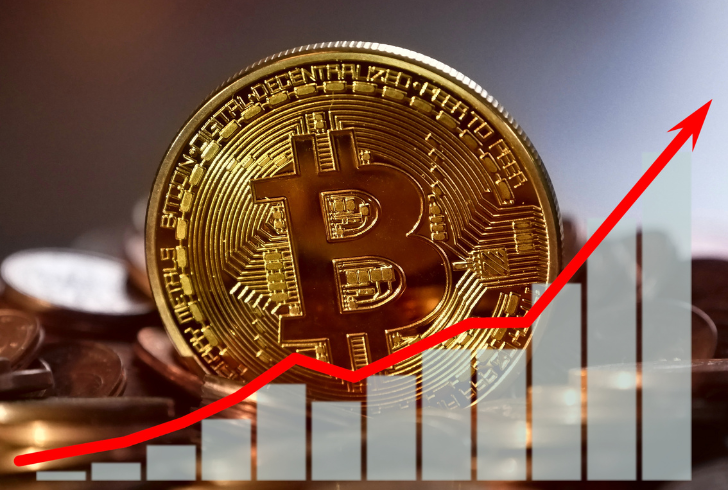
Will Bitcoin Crash to $0 or Hit $500K in a Decade?

Bitcoin’s future divides analysts into two extreme camps. Some see it becoming one of the most valuable financial assets in history. Others predict it will crash into obscurity, worth virtually nothing. The debate centers on whether Bitcoin will establish itself as a trusted store of value or crumble under pressure from rivals, technology, or government regulation.
By 2035, Bitcoin will be either a half-million-dollar asset or a failed experiment. There is little room for a middle outcome, which makes this debate so compelling.
Why Bitcoin Bulls See a $500,000 Future
Supporters of Bitcoin argue that its limited supply sets it apart from traditional assets. With only 21 million coins ever created, scarcity fuels long-term value. Each coin can be divided into 100 million Satoshis, but the cap remains fixed.
Proponents believe Bitcoin could replace gold as the world’s preferred store of value. Gold’s global market is valued at around $19 trillion. If Bitcoin captures even half that demand, the price could hit $500,000 per coin, giving it a $10.5 trillion market value.
Another driver of optimism is adoption. As more institutions and individuals adopt Bitcoin, its network effect becomes stronger. Increased participation boosts liquidity, stability, and trust, creating a cycle of growth that could propel its price to new heights.

Pixabay | Tumisu | Supporters of Bitcoin expect massive growth and higher value.
How Bitcoin Could Collapse to Zero
The optimistic case sounds strong, but risks remain enormous. Several scenarios could undermine Bitcoin entirely:
1. Quantum computing breakthroughs – If encryption is cracked before Bitcoin adopts quantum-safe protections, the network’s security could collapse overnight.
2. Rival digital currencies – Central bank digital currencies (CBDCs) and other cryptocurrencies like Litecoin or XRP could siphon users away.
3. Technical flaws – Bitcoin’s software is updated regularly, and a critical coding error could destabilize the system.
4. Government restrictions – Bans or harsh regulations could restrict adoption and reduce demand significantly.
Each threat is unlikely on its own, but even one could erase Bitcoin’s value quickly. If trust disappears, so will the market.
Network Effects – All or Nothing
One of Bitcoin’s defining traits is its reliance on network effects. A financial system either builds trust and adoption or fails outright. Bitcoin cannot linger in a gray area. If users continue to adopt it, the system grows stronger. As confidence rises, more money flows in, which encourages further investment. This creates a self-reinforcing cycle.
On the other hand, if confidence breaks due to hacks, regulations, or competition, the entire ecosystem could unravel. Users would leave, liquidity would dry up, and transaction processing would grind to a halt. In such a collapse, Bitcoin wouldn’t drift to $10,000 or $50,000 — it could drop to zero.
The Role of Governments and Regulation
Global regulators remain skeptical of cryptocurrencies. While some countries, such as El Salvador, embraced Bitcoin as legal tender, many others imposed restrictions or explored CBDCs as alternatives.
Stricter regulation could limit the use of Bitcoin, especially in mainstream financial systems. If CBDCs dominate, Bitcoin’s role as a global currency could shrink. However, many argue that regulatory clarity could also strengthen its long-term position, as institutions would gain confidence in adopting it.
A Look at Competing Technologies
Bitcoin is not alone in the digital asset space. Ethereum, XRP, and other blockchain networks offer unique features. CBDCs also present competition backed by powerful governments.
If a new technology surpasses Bitcoin in scalability, speed, or stability, it could draw users away. History shows that once-dominant technologies often fade when a superior option appears. Bitcoin’s challenge is to maintain its edge through resilience and continued adoption.

Instagram | @xrpcryptowolf | Ethereum, XRP, and government CBDCs offer unique alternatives to Bitcoin in the digital currency space.
Investment Strategies in an Uncertain Future
The polarizing predictions around Bitcoin make it challenging to know how to approach it as an investment. Treating Bitcoin as a high-risk, high-reward asset may be the most balanced strategy.
Some investors dedicate a small portion of their portfolios to Bitcoin, viewing it as an asymmetric bet. If it collapses, the losses are manageable. If it succeeds, the gains could be life-changing.
Institutional investors like Michael Saylor’s MicroStrategy have gone all in on Bitcoin—a bold move that comes with massive exposure. Most financial experts, however, urge a more tempered approach: diversify, hedge your bets, and never let Bitcoin holdings endanger long-term stability.
Bitcoin’s Potential to Transform Finance
Technology tends to follow two paths—it either upends entire systems or quietly disappears. Bitcoin stands at that crossroads. It could evolve into a fundamental layer of global finance or be remembered as a daring but short-lived idea.
If it succeeds, Bitcoin might loosen government control over monetary systems, alter how people think about savings, and take its place as a form of “digital gold.” By 2035, it could be as routine in portfolios as real estate or equities once were.
Navigating Uncertainty in Bitcoin’s Future
No forecast carries certainty here. Some analysts dream of $500,000 Bitcoin; others brace for total collapse. Whatever the outcome, this period will define the future of decentralized finance.
For investors and regulators, the strategy is the same—stay informed, diversify, and plan for extremes. The coming decade will determine not just Bitcoin’s place in finance, but how humanity defines value in a digital world.
More in Advisor
-
`
Why Do Pokémon Cards Outperform the S&P 500 As an Investment?
Pokémon cards have outperformed the stock market by a mile. Since 2004, they have delivered a staggering 3,821% return, according to...
September 27, 2025 -
`
America’s Billionaires Get Older—Millennials Wait for Wealth Transfer
Many of today’s billionaires don’t match the youthful tech-founder image often portrayed. While names like Elon Musk, Sam Altman, and Mark...
September 21, 2025 -
`
Can President Trump Legally Fire Fed Governor Lisa Cook?
Lisa Cook is right in the middle of one of the most explosive legal battles in Washington. President Trump wants her...
September 20, 2025 -
`
Jeff Bezos’ Advice for Millennials Who Want Financial Success
Millennials today have grown up in a world where instant access to products and services is the norm. From two-day deliveries...
September 13, 2025 -
`
Maison Margiela’s First-Ever Celebrity Campaign Stars Miley Cyrus
Miley Cyrus just changed the rules again. In August 2025, she became the first celebrity ambassador in Maison Margiela’s 37-year history....
September 12, 2025 -
`
Should You Rely on AI for Financial Advice? Here’s What Financial Experts Say
AI is everywhere right now, and yes, that includes your wallet. From budgeting to retirement planning, tools like ChatGPT, Google Gemini,...
September 6, 2025 -
`
95% of Businesses Report Zero Returns on In-House AI, MIT Study Shows
U.S. companies have funneled an estimated $35 to $40 billion into internal AI projects. Yet according to a new report from...
September 6, 2025 -
`
Why Americans in Their 80s Are Still Job Hunting
Charles Meoni, at 82 years old, believes he still has the skills to drive an 18-wheeler. Yet he faces rejection after...
August 30, 2025 -
`
Are Bitcoin & Ethereum the Right Inflation Hedge You Can Count On?
An inflation hedge is something that keeps or gains value when the cost of living goes up. People used to say...
August 30, 2025















You must be logged in to post a comment Login